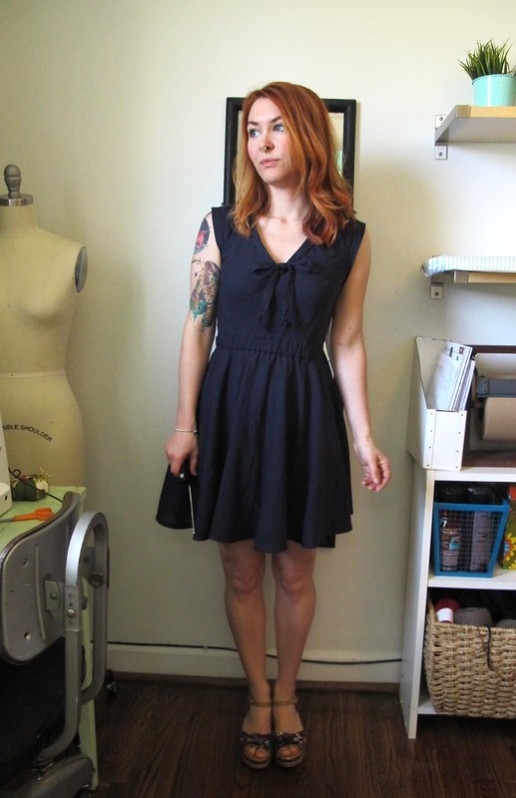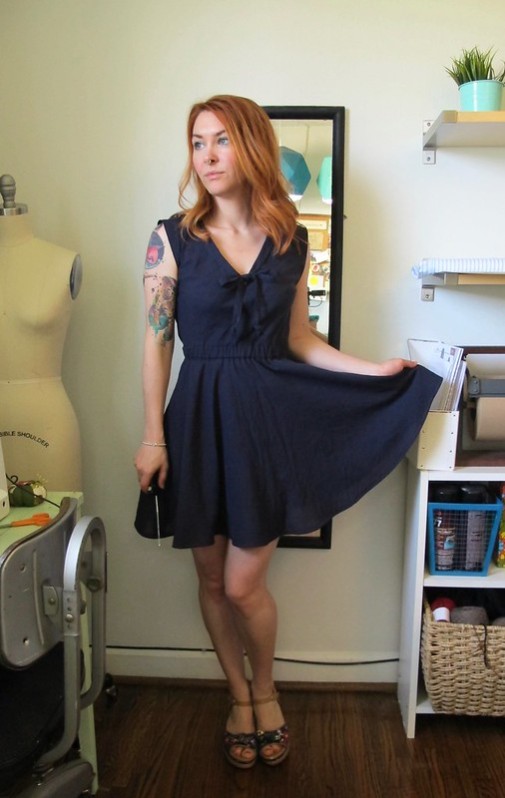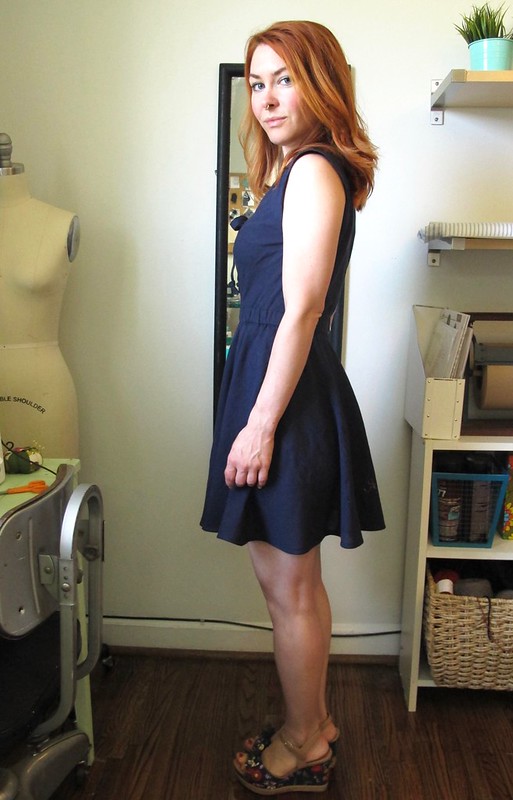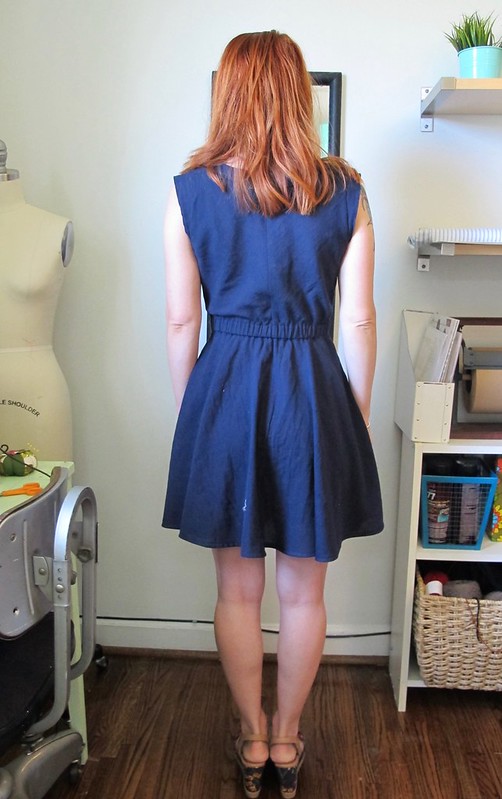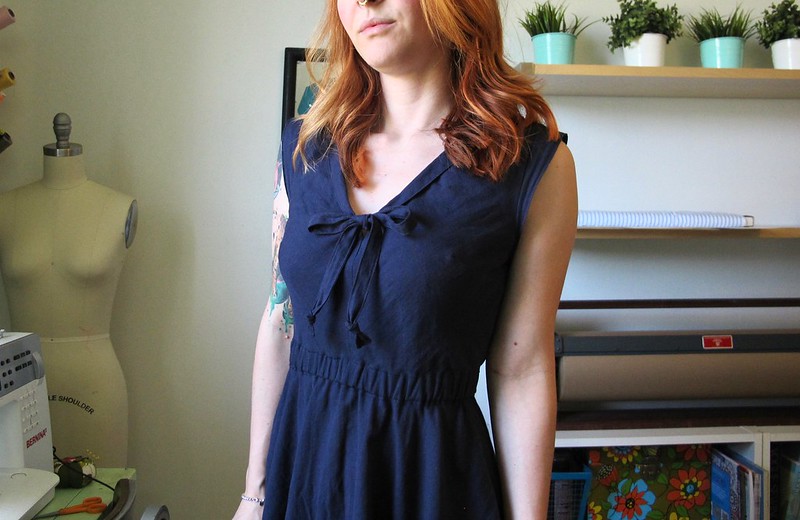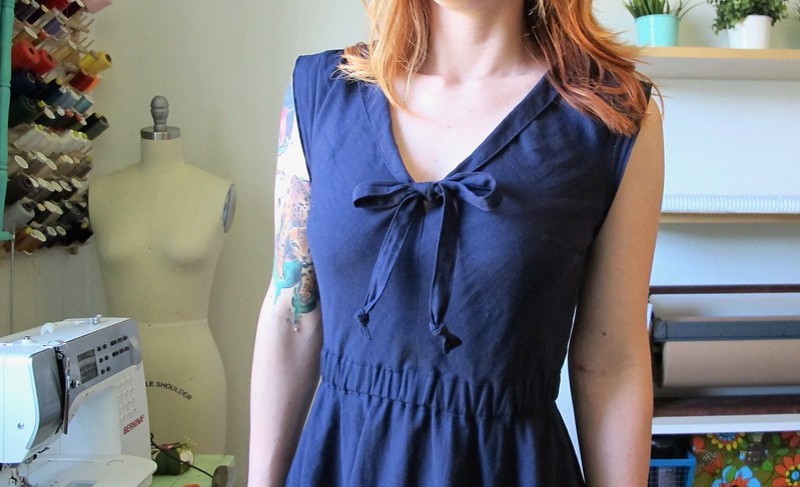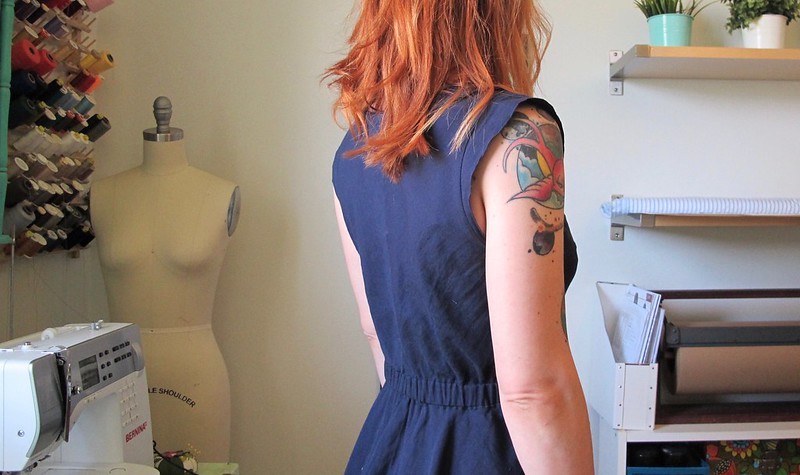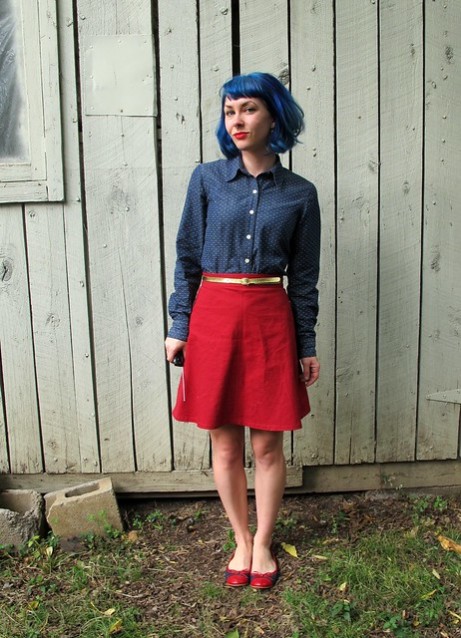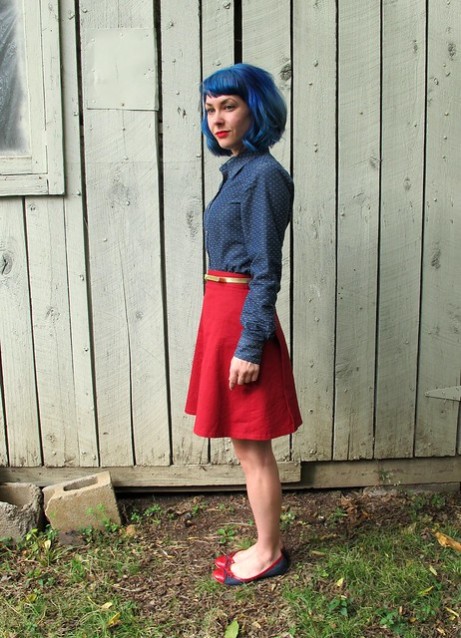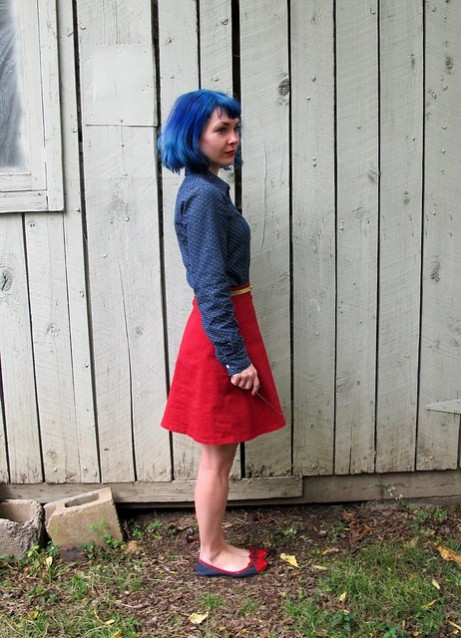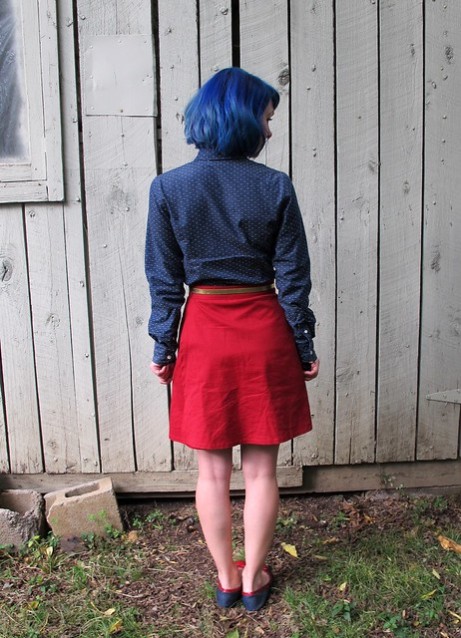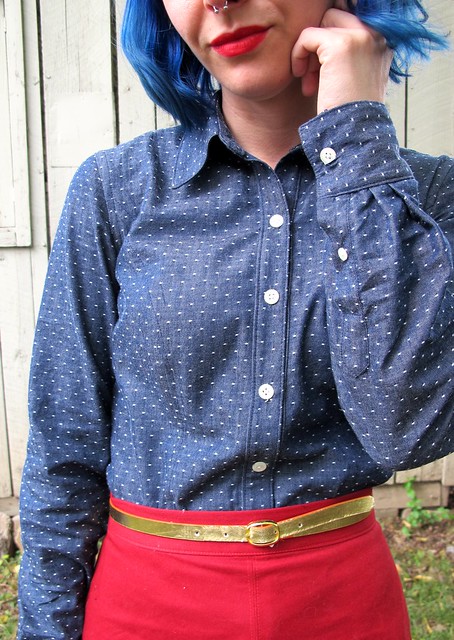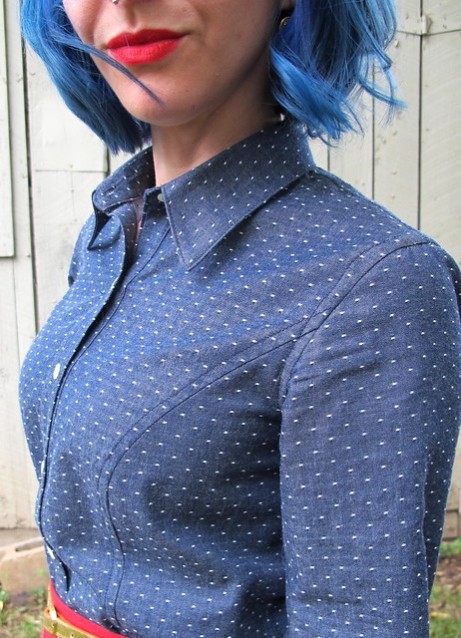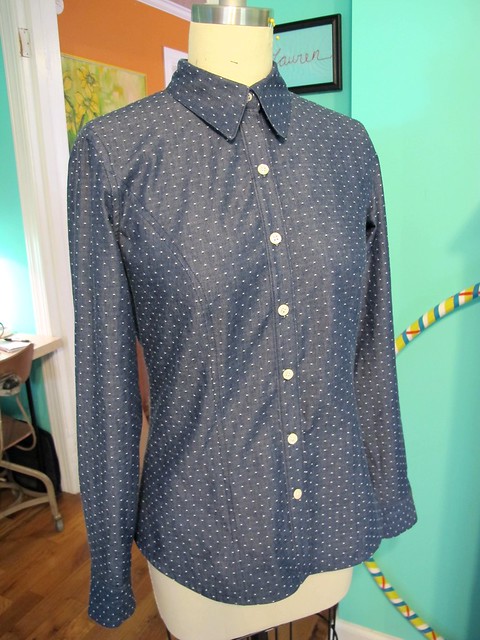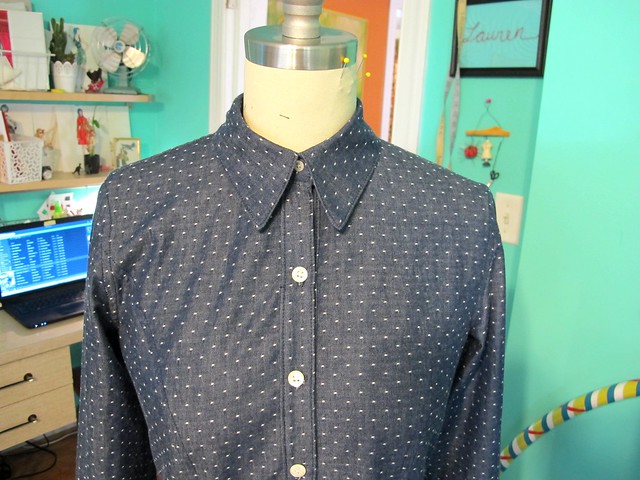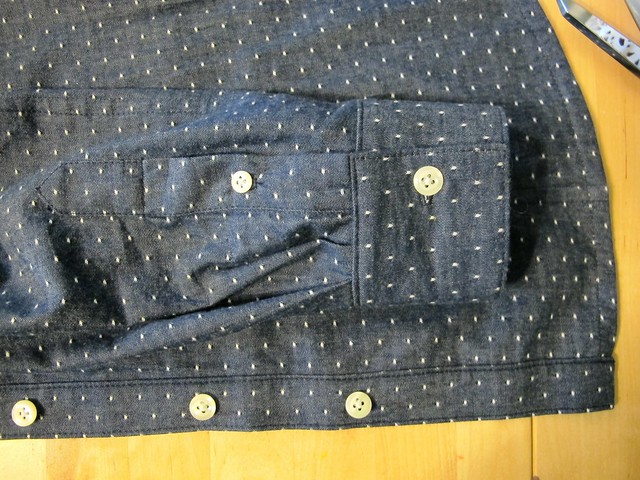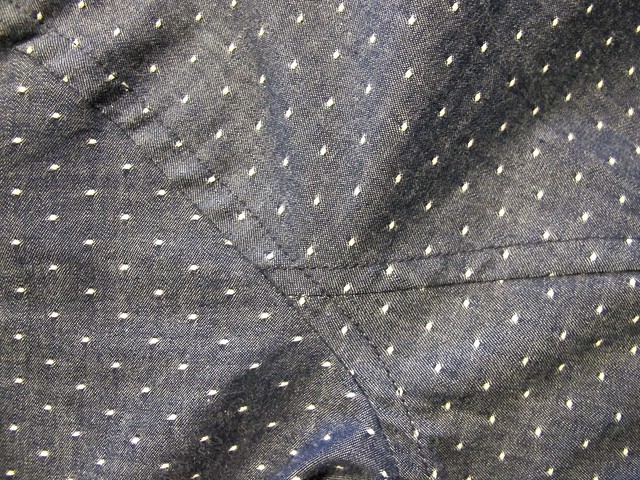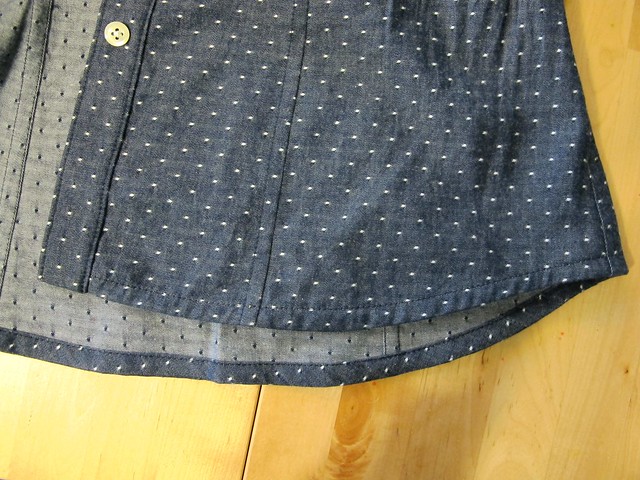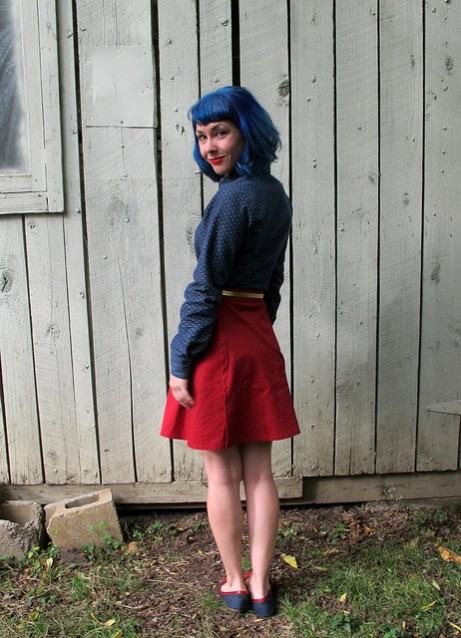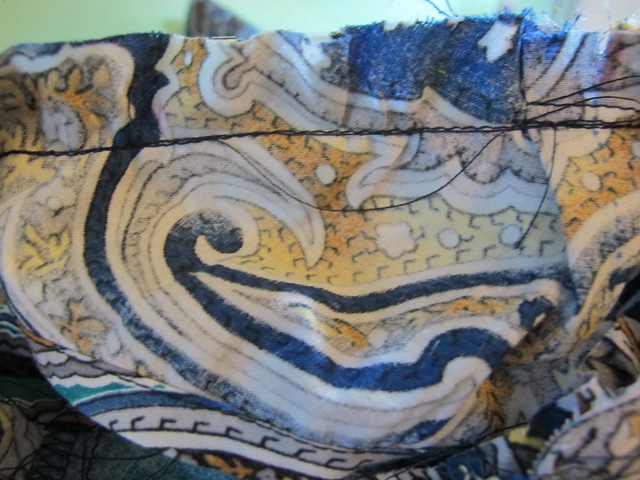I feel like it’s been a long time since I’ve made a pretty dress. To be fair, it’s also been a long time since I’ve felt like wearing a pretty dress – something about the cold and winter just makes me want to dress in head-to-toe black, and only wear pants (very, very stretchy pants, I should add). Once the sun starts heating up our side of the world, though, I’m ready for pretty dresses, bright colors, and fun shoes!
I was anticipating this a few months ago while still stuck in a winter spiral, so I planned for this one early. I knew I wanted to make the Deer & Doe Réglisse dress – it’s a pretty design, without being toooo frou-frou (I admire everyone who can stick to that look, but my style has really evolved to that point where that is totally not me anymore).
The original plan was to make this out of a traditional white/blue striped cotton seersucker, which I bought several yards at Metro Textile while I was in NYC. Unfortunately, my fabric – ok, actually the entire load of laundry – was victim to a laundry mishap, and now I have a bunch of indigo-dyed stuffed that was not supposed to be indigo dyed (and as of now, indigo dying and myself are NOT FRIENDS and don’t try to get us to kiss and make up, it won’t happen). I can probably salvage some of that yardage by cutting around the spots – or even re-dye the whole thing – but I was feeling a little over that particular piece of fabric so I decided to make the pattern out of something else entirely.
Anyway, it ended up working out in the best way possible because I am super happy with the end result! The Réglisse can run the risk of looking very juvenile if you’re not too careful – which, again, isn’t a bad thing, but it’s definitely not my style these days. Using a solid fabric really toned down the sweetness of the design, and also makes the dress a little more versatile. I’m trying to make myself be better about repeating outfits, and it’s easier to repeat an outfit when you know it’s not an entire statement piece on it’s own, you know? This solid navy is a great neutral for me, and goes with pretty much all of the rest of my wardrobe. Including all my shoes 🙂
The fabric I used for this dress is just a simple lightweight woven cotton, but it’s quite special to me because I bought it when I went to Egypt! It’s very soft and a little translucent, so I knew it would be really lovely to wear in the heat. Again, the deep navy color is a color that I wear a LOT, so it goes with most of my wardrobe. I only bought 2 yards, so I had to be a little creative with my cutting layouts – like, the undercollar is pieced, instead of cut in one piece – but I was able to eek it out!
I sewed this dress over the course of a few days. It was a nice, relaxing sew, which I really enjoyed. I cut a size 34, which is a little bit smaller than my measurements. I decided to do this because some of versions of this dress I googled seemed to run a little large, and I didn’t want it to be too blouse-y on me. As it stands, I think the arm holes are a little too deep – any lower and they would definitely show my bra – but the overall fit is good, and I am happy with it. I chose the elastic length by putting it around my waist to determine what was comfortable. My experience with using elastic is that I tend to pull it too tight, and it ends up being so uncomfortable that I never wear the dress (which means that, right now, I am in the middle of Operation Remove All Elastic And Replace With Longer in my wardrobe). So I left this one a little loose, which ended up being sooo much more comfortable.
All the seams are finished with my serger – I used 3 threads instead of my usual 4, since it’s a little narrower and worked better with the delicate fabric – I serged them individually and pressed the seams open as instructed. The bodice and skirt are cut on the bias, so I made sure to really stabilize the neckline with staystitching before handling it, to prevent it from stretching. The skirt needed to hang on my dressform for about 48 hours before I could hem it, and it was super uneven after all the bias settled and dropped. I did make a couple of changes to the construction – added some topstitching where it wasn’t required (mostly because I thought it looked better that way) and I sewed the elastic waistband casing so that there are no raw edges. I don’t have any pictures of the inner construction, so, sorry, you’ll have to trust me on that one haha.
I was a little afraid up until the very end that I wasn’t going to like this dress – the sweet little collar and bow were making me a bit nervous. But I am happy with how it turned out, and I think the solid dark color helps with that! I experimented with tying the neck ties so that it’s more like a necktie, but I actually like it as a bow. I knotted the ends because, I dunno, I like the way it looks haha.
I see that Deer & Doe have updated their pattern to include an option without the bow – which I may try in the future. I’ll have to draft it myself, though, since I have one of the older paper copies, before the rebranding.
I think that’s all for this dress! BTW, as a side note – I have some more workshops coming up! And don’t forget about the OAL, which is kicking off very soon! 😀
Garment Sewing Weekend July 14-16, 2017
Three Little Birds Sewing Co., Hyattsville, MD
Come spend a weekend working through a sewing project of your choosing with meeee as your guide! For 2 glorious days, work on the project of your choice in the Three Little Birds Sewing Co. space. The beauty of this workshop is that each students get to choose their own project. Do you need help with fitting? With construction? Interested in bra making? Perhaps you’ve had your eye on a garment you don’t feel comfortable tackling on your own. I will guide you through all of these and more!
Jeans Making Sewing Intensive August 11-12, 2017
Workroom Social, Brooklyn, NY
Let me show you how fun and fulfilling it is to make your own jeans! In this class, we will work out way through the Ginger Jeans pattern (my personal favorite!), learning the basics of fitting and construction for making your own jeans. We will also go over all the fun extras that separate jeans from mere pants – topstitching, fancy seam finishes, and installing hardware. Yay!
What are your sewing plans for this summer?

